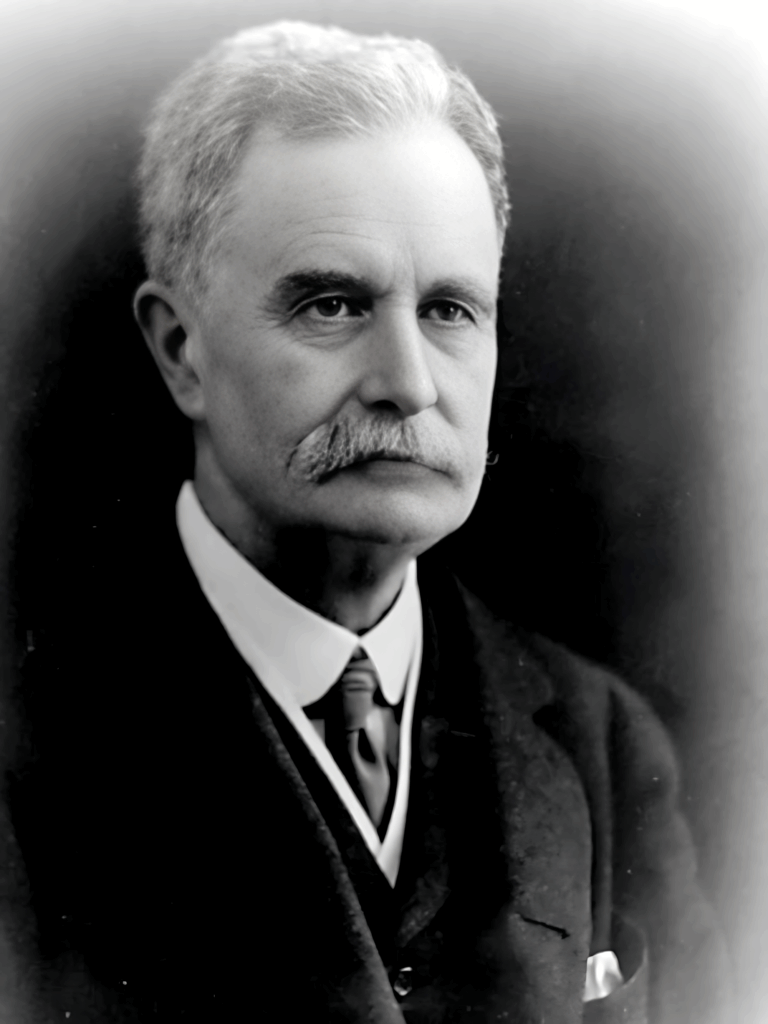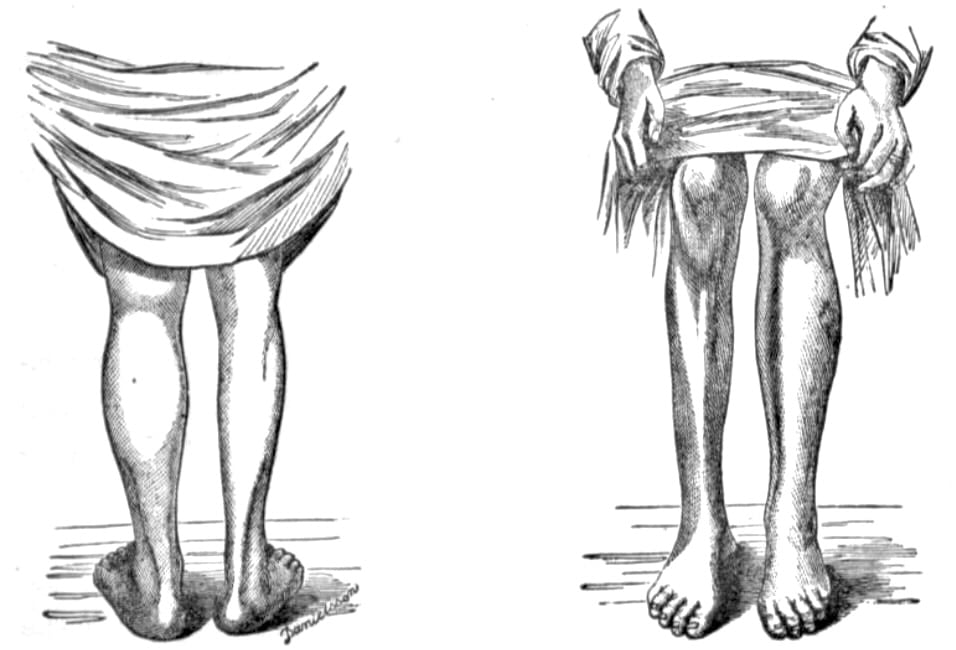Howard Henry Tooth

Howard Henry Tooth (1856–1925) was an English neurologist.
Tooth was a pioneering English neurologist whose early work on peripheral neuropathy established the foundations of one of the most recognised hereditary neurological syndromes. He earned his place in eponymous history alongside Jean-Martin Charcot (1825–1893) and Pierre Marie (1853–1940) through his 1886 Cambridge thesis The Peroneal Type of Progressive Muscular Atrophy, later named Charcot–Marie–Tooth (CMT) disease.
Educated at St John’s College, Cambridge, and clinically trained at St Bartholomew’s Hospital in London, Tooth emerged as a meticulous clinician and keen pathologist. His insights into spinal cord degeneration, intracranial tumours, and nerve pathology broadened the neurological landscape at a time when the field was rapidly consolidating in London and Paris.
Beyond his academic accomplishments, Tooth served in both the Boer War and World War I as a military physician. He was decorated for his wartime contributions, including appointments to the Orders of St Michael and St George and the Bath. His later life was affected by declining health, attributed in part to his war service.
Tooth’s legacy in neurology endures not only through the eponymous CMT disease but also in the broader context of clinical neurology and neuropathology. His detailed observations, balanced by a compassionate clinical approach, influenced generations of neurologists at the National Hospital and St Bartholomew’s.
Biography
- 1856 – Born April 22 in Brighton, England, eldest son of Frederick Tooth and Rebecca Newsome.
- 1873 – Matriculated at St John’s College, Cambridge.
- 1877 – Graduated B.A. St John’s College in Cambridge. MA (1881)
- 1880-1885 St Bartholomew’s Hospital – MRCS (1880), MB (1882), MRCP (1881)
- 1881 – Admitted M.R.C.P.
- 1886 – Awarded M.D. from Cambridge for his thesis The peroneal type of progressive muscular atrophy, one of the first clinical descriptions of what would become Charcot-Marie-Tooth disease.
- 1887 – Appointed assistant physician at the London Metropolitan Hospital and the National Hospital for the Paralysed and the Epileptic, Queen Square.
- 1888 – Delivered the Gulstonian Lectures on secondary degeneration of the spinal cord.; FRCS
- 1895 – Assistant physician at St Bartholomew’s Hospital.
- 1898–1901 – Served in South Africa with the Portland Hospital during the Boer War.
- 1901 – Appointed Companion of the Order of St Michael and St George (C.M.G.).
- 1906 – Promoted to full physician at St Bartholomew’s Hospital.
- 1914–1919 – Served in World War I as colonel in the Royal Army Medical Corps; mentioned three times in dispatches; served in London, Malta, and Italy.
- 1918 – Appointed Companion of the Order of the Bath (C.B.).
- 1921 – Retired due to ill health; moved to Hadleigh, Suffolk.
- 1925 – Died May 13 , in Hadleigh, Suffolk following a cerebral haemorrhage.
Medical Eponyms
Charcot-Marie-Tooth disease (1886)
Charcot–Marie–Tooth disease (CMT) is one of the most common inherited neurological disorders, encompassing a group of genetically and clinically heterogeneous peripheral neuropathies. It typically presents as a slowly progressive distal muscle weakness and atrophy, usually beginning in the lower limbs during adolescence or early adulthood, often associated with foot deformities (e.g. pes cavus), distal sensory loss, and absent deep tendon reflexes. Involvement of the upper limbs follows later in the course of the disease.
1886 – Jean-Martin Charcot (1825-1893) and Pierre Marie (1853-1940) describe five patients with a familial, progressive atrophy of distal lower limbs – Sur une forme particulière d’atrophie musculaire progressives , proposing a spinal origin.
Though criticised for attributing the disorder to myelopathy rather than neuropathy, they acknowledged diagnostic uncertainty and refrained from definitive localisation — a cautious insight given the limited tools of the time.
1886 – Tooth independently described The peroneal type of progressive muscular atrophy in his Cambridge thesis describing a similar inherited neuropathy, correctly localising it to the peripheral nerves

Key Medical Contributions
Contributions to Neuropathology
Tooth’s investigations into secondary spinal cord degeneration and intracranial tumours (notably his 1912–13 study on the survival period of gliomas) were regarded as landmark contributions in early 20th-century neurology. His detailed neuropathological analyses advanced the understanding of central and peripheral nervous system disorders.
Military Medical Service
Tooth served with distinction in two major conflicts. During the Boer War, he worked in a mobile field hospital. In World War I, he held senior posts in military hospitals and was decorated with honours for his services. His health never fully recovered following the war.
Major Publications
- Tooth HH. The peroneal type of progressive muscular atrophy. Thesis; for the degree of M.D. in the University of Cambridge, 1886
- Tooth HH. The Gulstonian lectures on secondary degenerations of the spinal cord, delivered at the Royal College of Physicians, March 1889
- Tooth HH. Study of a case of bulbar paralysis : with notes on the origin of certain cranial nerves. 1892
- Bowlby AA, Tooth HH. A civilian war hospital : Being an account of the work of the Portland Hospital, and of experience of wounds and sickness in South Africa. 1901
- Tooth HH. Presidential Address: Some Observations on the Growth and Survival-period of Intracranial Tumours, based on the Records of 500 Cases, with Special Reference to the Pathology of the Gliomata. Proc R Soc Med. 1913;6(Neurol Sect):1-48
- Tooth HH. Progressive Double Hemiplegia. Proc R Soc Med. 1913;6(Neurol Sect):140-1.
- Tooth HH. Gumma Cerebri: Results of Treatment. Some Histological Features. Proc R Soc Med. 1913;6(Neurol Sect):87-113.
References
Biography
- Obituary: Howard H Tooth, C.B., C.M.G., M.D., F.R.C.P. Br Med J 1925; 1: 988
- Obituary: Dr Howard H. Tooth. Saint Bartholomew’s Hospital Journal. 1925; 32: 142-144
- In memoriam: Dr Howard H. Tooth, C.B., C.M.G. Saint Bartholomew’s Hospital Reports. 1925; 58: 9-15
- Alumni: Tooth, Howard Henry (TT873HH). Cambridge Alumni Database. University of Cambridge.
- Pearce JMS. Howard Henry Tooth (1856–1925). Journal of Neurology. 2000;247:3-4
- Biography: Howard Henry Tooth Munk’s Roll: Volume IV. Lives of the Fellows of the Royal College of Physicians of London
Eponymous terms
- Kazamel M, Boes CJ. Charcot Marie Tooth disease (CMT): historical perspectives and evolution. J Neurol. 2015;262(4):801-5.
- Compston A. From the Archives, Brain, 2019; 142(8): 2538–2543
Eponym
the person behind the name
BA MA (Oxon) MBChB (Edin) FACEM FFSEM. Emergency physician, Sir Charles Gairdner Hospital. Passion for rugby; medical history; medical education; and asynchronous learning #FOAMed evangelist. Co-founder and CTO of Life in the Fast lane | On Call: Principles and Protocol 4e| Eponyms | Books |
